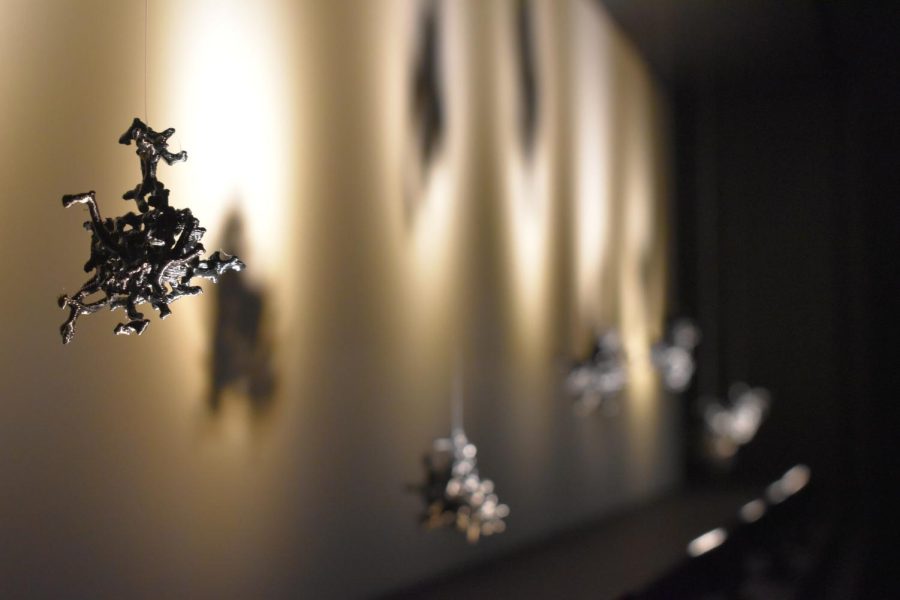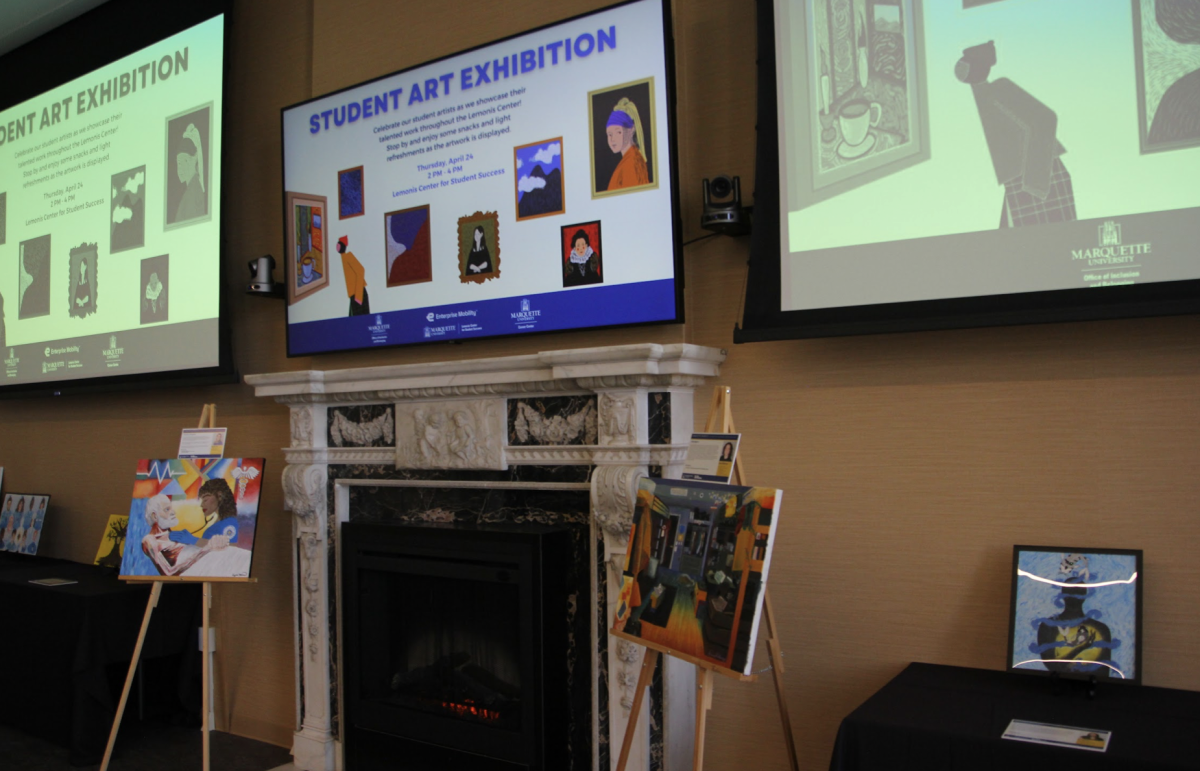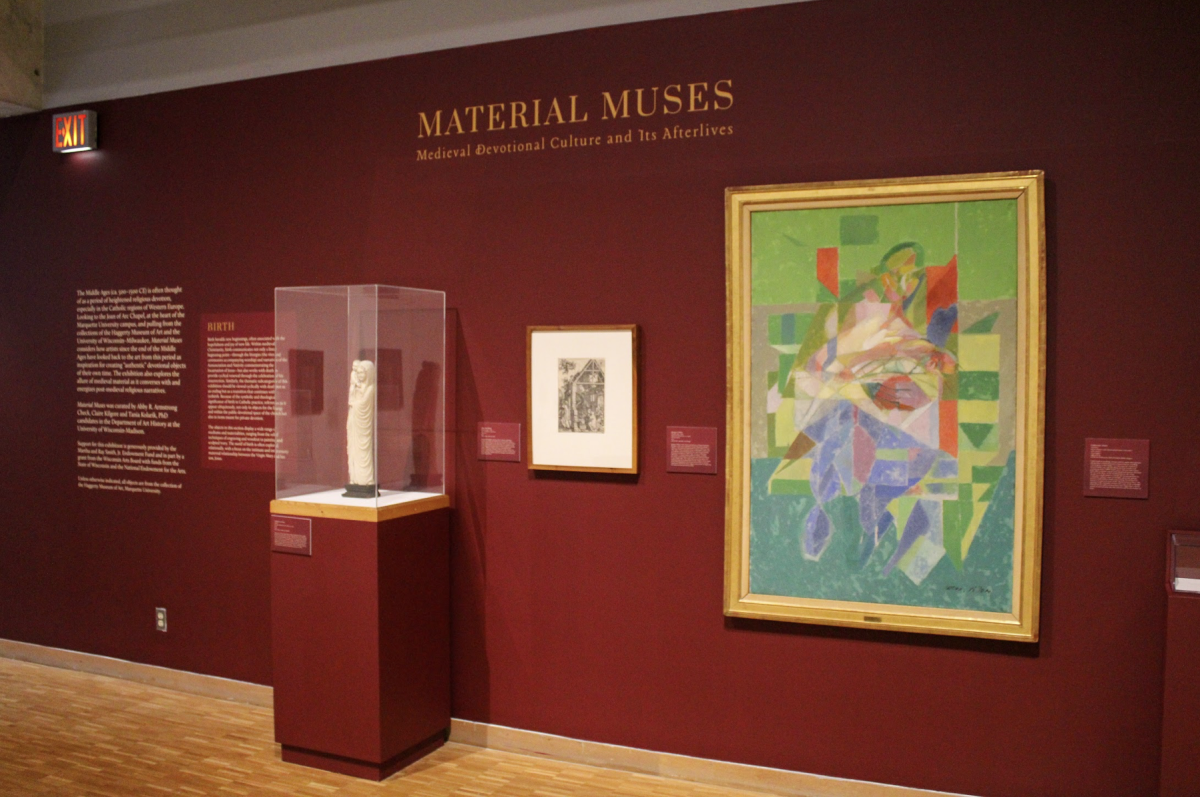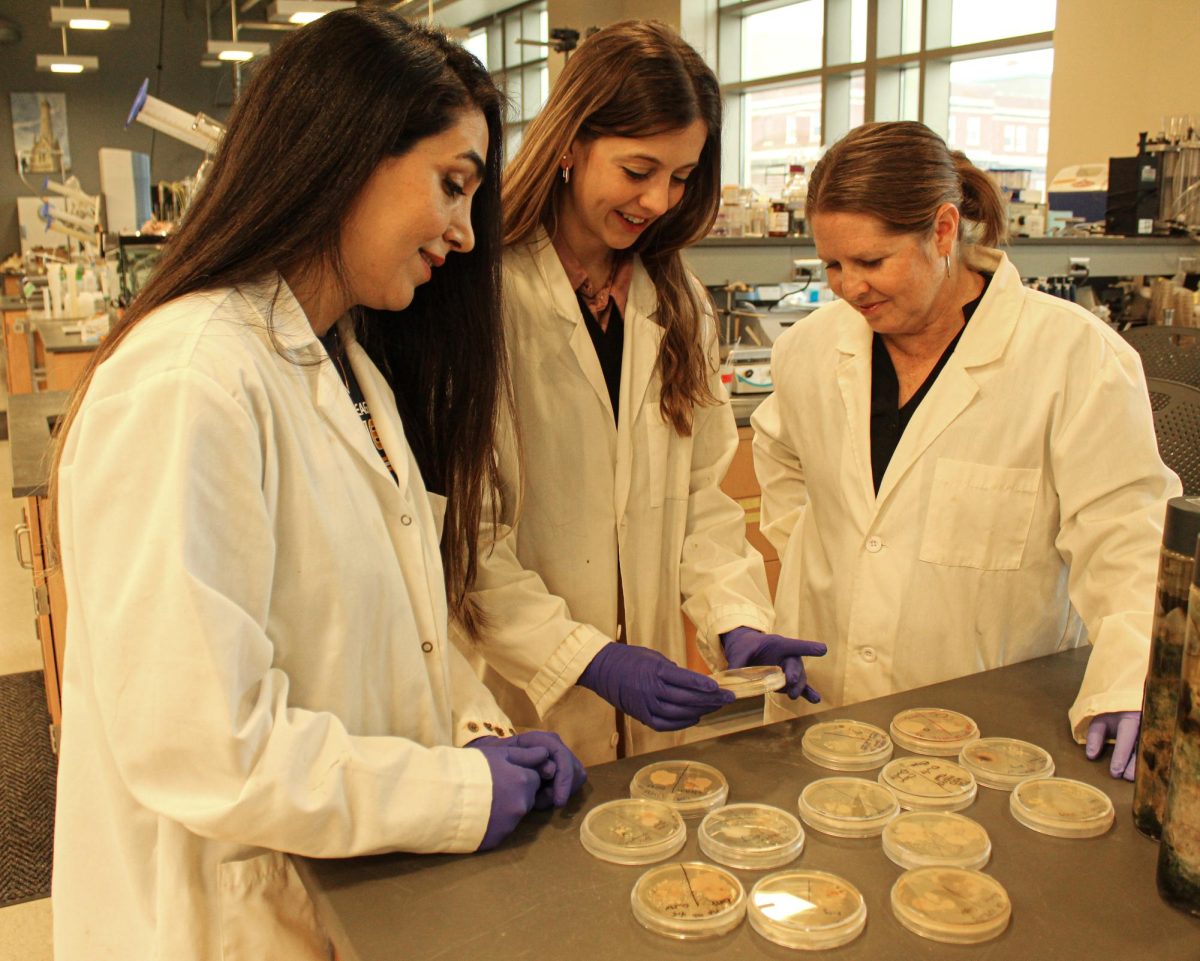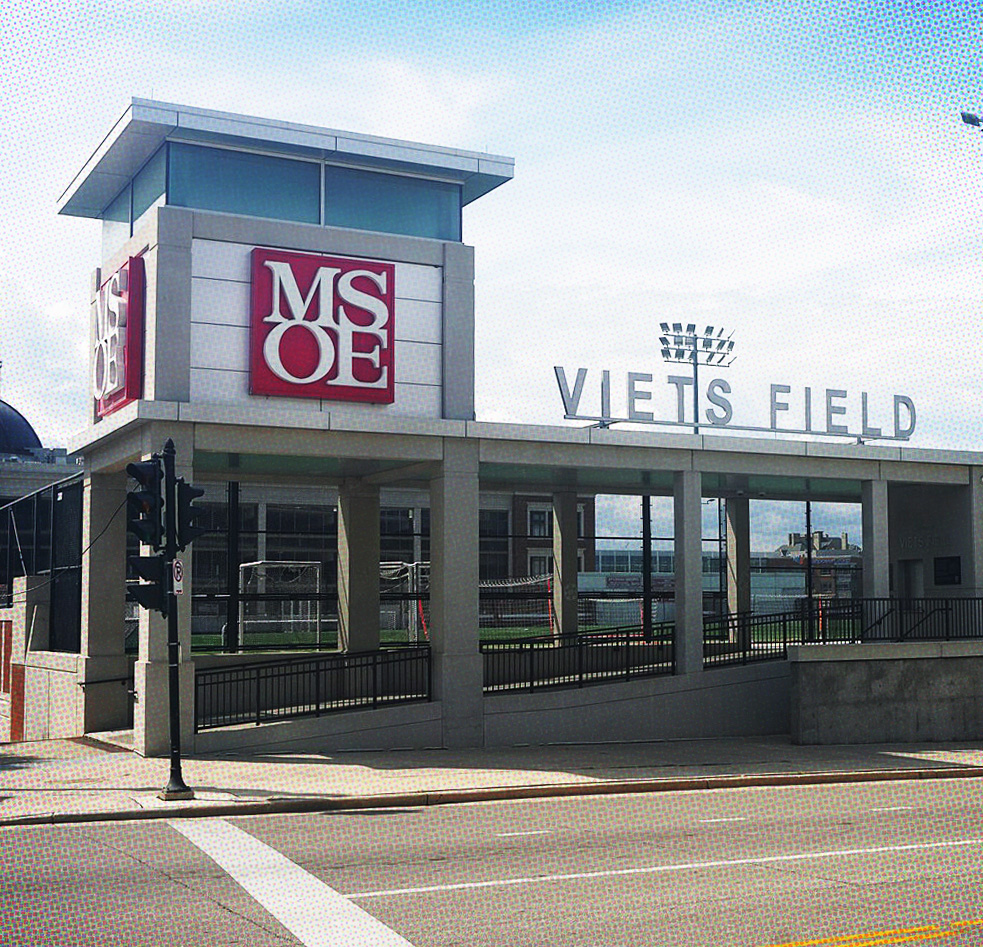The Haggerty Art Museum partnered with Marquette Professor, Somesh Roy, and internationally known Berlin artist, Tomás Saraceno to create an exhibit, “Entangled Air,” that shows the negative effects of soot, an air pollutant.
The exhibit opened Jan. 20 and will remain open until May 21.
One area of the exhibit is a pitch-black room that is illuminated by one light placed up by the ceiling. The light reveals little particles that are floating in the air. This shows visitors that even if they can’t see soot particles, they are still around us.
Another art piece consists of six black canvases that have white shapes on them to represent the uniqueness of each soot particle.
Roy named the exhibit “Entangled Air” to illustrate how we are all affected by the air, living or not.
“We are all breathing the air or the buildings corroding from the air. You must clean it otherwise it will become green because it is reacting with the air outside,” Roy said. “Everything is engulfed in the air. We are entangled with one another in a sea of air.”
Roy wanted to combine the fields of science and art and show that these fields are interconnected. The exhibit gave visitors a way to visualize the data collection of soot.
“We look at these two fields narrowly and these predefined fields of what is science and what is art?” Roy said. “If you are an artist and look at a flower you look at the beauty of it, but as a scientist you may ask why is it blue? There is not just a visual beauty, but an inner beauty.”
Marquette, and more specifically Roy, have been working to understand the complexity and intricacy of soot particles. Roy has been using computer simulations and machines to explain that no soot particles are the same, similar to how no snowflakes are the same. He wanted to advance research on soot ever since he was a kid.
He loved watching the shadows from candles and looking at the history of cave paintings. Growing up he wanted to become a historian. However, he became an engineer, but he learned that he could combine his love for history and engineering. In cave paintings, the black pigment that is used is soot. He has now combined his childhood dreams of becoming a historian and his current career of engineering by inspecting old cave paintings to get a better understanding of soot.
“Tomás Saraceno works on making things that are invisible, visible,” Roy said. “These particles [soot] are tiny, 10,000 times smaller than a hair, but he has a unique way of showing these complex and complicated particles.”
Roy has been working on this exhibit since 2019. He received a 5-year National Science Foundation grant to begin his research. Last year, Roy and others working on the exhibit contacted Saraceno, and progress toward the exhibit began to take off.
Emilia Layden, associate director for Curatorial Affairs, played a key role in helping the exhibit come to life. She worked firsthand with Roy and Lynne Shumow, Curator for Academic Engagement, to collaborate and brainstorm ideas to produce the exhibit.
“I want visitors to walk away with a greater understanding of how soot is created, how it impacts the air quality and public health,” Layden said. “I want people to learn about what they can do to combat those negative effects.”
Roy is continuing his work by creating an aerocene hot air balloon that flies without burning anything. They are collecting plastic bags at the Engineering Hall and Haggerty Art Museum. The flying event for the balloon, “Will It Fly”, will be held in Central Mall on May 2 from 11 a.m. to 1 p.m., with a rain day on May 6 from 10 a.m. to 12 p.m.
This story was written by Aiyona Calvin. She can be reached at aiyona.calvin@marquette.edu.

